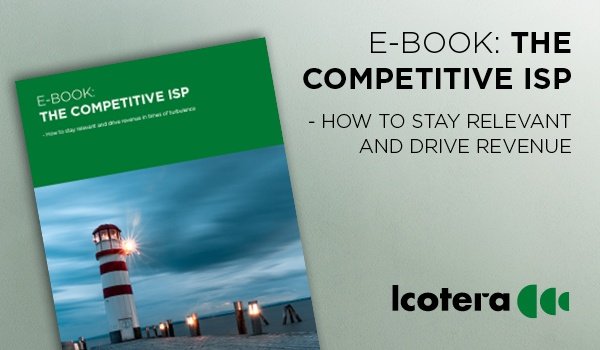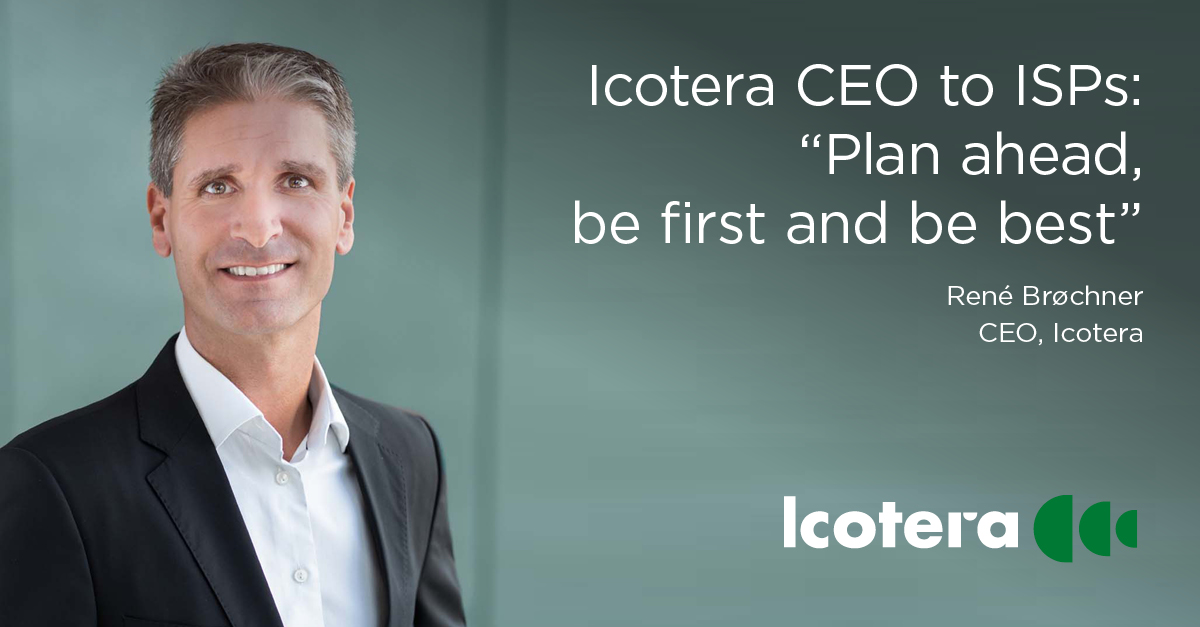Increasing end-user demand for connectivity is driving the need for fiber, and FTTH rollouts are taking place at increasing speed throughout Europe. For ISPs, this is a unique opportunity, but only those who take advantage of the situation will succeed. Icotera’s CEO, René Brøchner, shares his perspectives.
Fiber rollouts have been gathering pace throughout Europe in recent years. Though the speed at which FTTH rollouts have taken place is determined by national market conditions, developments are only going in one direction. Even late-mover markets are gearing up.
Simultaneously, open access has come to stay. Operators are opening their networks, and this drives up competition.
Altogether, this forces ISPs to renew their strategies and make choices that determine the future of their businesses. “Business as usual” will not work anymore. So, what will?
René Brøchner, CEO at Icotera, has a mantra that he likes to put forward to ISPs: “Plan ahead, be first and be best”. As simple as it sounds, this requires a clear business strategy and it requires courage to move fast and think big to realize the strategy.
Have a clear strategy
Fiber operators are currently opening their fiber network to third-party ISPs: either because they are forced by regulations, or because they simply identify market opportunities and economies of scale. This is a positive trend, according to René Brøchner.
- Open access increases competition and allows for new players to enter the market. At the same time, it gives network operators opportunities to increase returns on their fiber investment. But be prepared that these new players can overnight offer customers the same high speeds and the unique full fiber claim as you can - often combined with value-added services at a highly competitive price.
The question ISPs should ask themselves is: Are we really capable of meeting the increased competition that comes with open access?

"If you open your network, you need to have a plan. This includes both the right wholesale price model for third-party ISPs, and a strategy for how to differentiate from competitors. Because in the new reality, the two parameters most likely to be your key selling points, full fiber and high speed, are simply not unique anymore."
Rene Brøchner, CEO, Icotera
Don’t let low penetration become the showstopper
As a result of the rapid fiber expansion, operators need to move quickly if they want their piece of the pie. And even though both pace and ambition differ from market to market, one rule of thumb applies to all ISPs:
- Once fiber cables have been placed under the ground, in most markets other providers are unlikely to dig into the soil next to them. It should therefore be a priority to move fast to secure as much infrastructure as possible, René Brøchner points out and explains:
- Don’t let low initial penetration become the showstopper for your business. My advice is always: Think big and strive to go national from the beginning, because if you don’t, others will. Of course, there are market differences to take into consideration, but even in markets at the forefront, many households still haven’t got fiber access.
From being first to being best
To be first is only part of the mantra for the CEO. Though it will bring ISPs one step ahead, success will always depends on quality of service.
Over the last decade, the industry has been fighting to accelerate speeds into homes - and it has succeeded in doing so. Today, end-users care about primarily one thing: Complete in-home Wi-Fi coverage. End-users want a seamless and stable connection, and if a customer buys a 1,000 Mbit connection, he expects it to work in every corner of the home.
When ISPs fail to deliver this, it potentially becomes a threat to the business. And the fiber connection is rarely the problem:
- Per definition, fiber is the most stable connection you can offer internet services on, problems rarely stem from the fiber. Rather, the customer premise equipment (CPE) and in-home cabling are the vulnerable points, says René Brøchner.
Therefore, to offer stable in-home performance in every corner of the home, high-quality CPE is a prerequisite. But unfortunately, a cost-per-unit focus often stands in the way when ISPs decide which CPE to install with end-users.
- The price difference between a high-quality router and an average router is about one percent of your connection cost. But that one percent can be the difference between satisfied or dissatisfied end-users, who then leave your business and result in a higher churn rate. Our calculations show that if only one customer sticks with your business one month longer, or if he calls your customer support once less every second year, the investment will pay back.
Adding to this, ISPs will often save costs on access points, because one single high-quality router can cover the entire home.
René Brøchner ends: - Investing in high-end CPE is actually one of few investments in customer experience that is directly related to bottom line and churn rates.
-----------------------------------------------------------------
Interested in HOW your ISP business can stay ahead?
In this e-book, we look into how choosing the right business strategy and using customer data to deliver a proactive customer experience are two ways that will help you build a strong business case. And much more... Download our new E-book: The competitive ISP here

